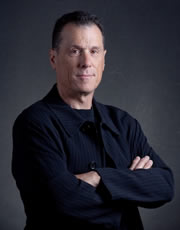 After spending two days at Yale giving a talk and meeting with students, I spent a couple hours on the train back to New York in conversation with two of my fellow visiting artists, A.I. Steiner and Michael Jones McKean. Both of my travel colleagues are practicing artists who also teach and are deeply committed to art as a method of social interaction. Both are keenly aware of the challenges the arts face in the present moment, of the politics of the art world and the world in general. It is a rare pleasure to spend a concentrated amount of time with little or no interruption, nothing to break the flow of conversation about something that inspires and excites; collegial discourse about shared experience and frames of reference; about deeply held ideas and newly discovered possibilities. Cohorts of like-minded artists/teachers grouped around conceptual frameworks, common points of reference, ideologies and formal concerns, or, purposefully gathered around seemingly antithetical methodologies, adversarial conceptual approaches or other antagonistic, dialectical structures; practicing argument as a social structure; such is our prerogative as contemporary practitioners. We are a part of a continuum of individuals who gain traction inside of the group through the validation of our own methods and ideas, not as the truth or as the only way, but as a set of possibilities.
After spending two days at Yale giving a talk and meeting with students, I spent a couple hours on the train back to New York in conversation with two of my fellow visiting artists, A.I. Steiner and Michael Jones McKean. Both of my travel colleagues are practicing artists who also teach and are deeply committed to art as a method of social interaction. Both are keenly aware of the challenges the arts face in the present moment, of the politics of the art world and the world in general. It is a rare pleasure to spend a concentrated amount of time with little or no interruption, nothing to break the flow of conversation about something that inspires and excites; collegial discourse about shared experience and frames of reference; about deeply held ideas and newly discovered possibilities. Cohorts of like-minded artists/teachers grouped around conceptual frameworks, common points of reference, ideologies and formal concerns, or, purposefully gathered around seemingly antithetical methodologies, adversarial conceptual approaches or other antagonistic, dialectical structures; practicing argument as a social structure; such is our prerogative as contemporary practitioners. We are a part of a continuum of individuals who gain traction inside of the group through the validation of our own methods and ideas, not as the truth or as the only way, but as a set of possibilities.
My colleagues on the train each articulate their own work and process in significantly different ways then each other or than myself. That is not a rationale for finding fault or for changing seats, rather it is a portal to a conversation. As former New York Times art critic and writer Michael Brenson notes:
I believe in conversation. In the best conversations, no one is used; ownership is shared. Everyone leaves with a sense that the ideas exchanged belong to each person present. Everyone leaves respecting those who were part of the exchange, whether or not there was agreement.
I visited the current Whitney Biennial on a gray and rainy New York day. What I noticed in this iteration was a sense of play, of diversity, and a preponderance of handwork that often combines “high” and “low” culture and its detritus. Such big and publicly organized exhibitions seem to court outrage and tend toward the fantastic, employing curatorial activism as the kind we see in any large survey, especially the Biennial, featuring gestures that often seem choreographed to engage, to prod and to prick at the surface of prevailing tensions. Such irritations catalyze conversations about a multitude of things. And these sort of conversations reverberated throughout the space of the Whitney as I wandered between floors and between the work that sometimes seemed to flow across the boundaries of one installation into the next, or to sonically bleed across spaces and media, overlapping paintings with sound and sound with sculptures or objects.
Brenson’s aspirations for the kind of conversation I experienced on my train ride to New York seemed to be everywhere in the Whitney; groups of school-kids as well as older students and their guides or teachers were actively engaged in conversations about what they saw and (I assume) what it meant to them. I was struck by the intergenerational span of museum-goers as well as the clearly global citizenship of those perusing the spectacular collection of very contemporary work across every imaginable media and methodology of making. The conversations happening amongst people in the crowded spaces were impossible to ignore; it seemed to be a part of the fabric of the show. The writer Adam Gopnik says,
Talking in museums is one of the things that makes them matter, and the way in which we talk in museums is one of the things that define for us what they are.
I would add that talking in museums is one of the things that not only defines what they are, but who we are in relation to the museum, where we fit, where we are implicated and where we can make a difference as well.
A final note: Gilbert Baker, industrial artist in residence at Paramount Flag Company in San Francisco and creator of the Rainbow Flag, died last week. An advocate for human rights, he worked tirelessly for gay rights and the LGBTQ community from the 1970’s until his death, making banners for protests and marches and sharing the flag and its legacy with the world.
Douglas Rosenberg
